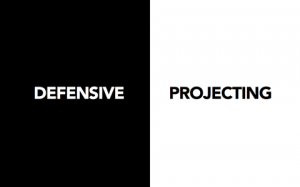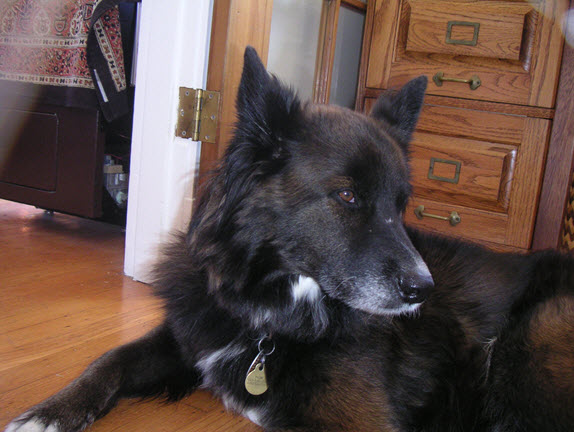 “You’re judging me again. I feel like you’re j always judging me,” Patti lamented to her close friend, Megan.
“You’re judging me again. I feel like you’re j always judging me,” Patti lamented to her close friend, Megan.
When Megan considered, she realized Patti’s lament was true. Megan had been harshly judging Patti as uncaring, selfish and completely incapable of generosity. And as a good lawyer, Megan found lots of supporting evidence.
But Megan was working with a talented coach – engaged in working deeply and transforming her shadow (her “dark side”), so when she heard Patti’s accusation, she swallowed hard and knew she had work to do.
[Note: Any part of yourself that you disown becomes part of your shadow…and it wills out in strange and often terrible ways – ruining relationships, causing suffering until you transform it by bringing it into the light of our understanding. This means that what we keep unconscious whether socially considered good or bad, leaks out in behavior which often leaves you scratching your head or worse – especially if someone calls you out on it.
Megan had read in a paper by Dr. Prinzivalli that, “The fast track to consciousness is to see every judgment as a disowned part of the self and explore it until there is an honoring of how that quality comes to serve.”
So how were the harsh judgments she had about Patti going to serve her own shadow work? And how in the world to “honor” the qualities that seemed so awful?
Megan began by acknowledging that there was something in herself that she wasn’t seeing. Thus she began the deep, psychological investigation that Jung claimed could reveal “ 90% of the gold.”
In Megan’s life, there was ancient history around “uncaring, selfish” behavior and the incapability of being generous. Her severely ill mother, who suffered from bouts of schizophrenia and was also bipolar, had often been incapable of caring for Megan or even acknowledging her presence. This emotional neglect had left Megan traumatized on many occasions. Her tender child’s defense was to take a stand to be different, very different. From a child’s perspective, this was inherently intelligent.
So what was the problem? Megan had split off the normal, natural part of herself that would exhibit self-interest, self-care, a balanced approach to giving AND receiving from her consciousness . (She focused exclusively on the giving part.)
She had locked the balanced, self-interest part far from view and kept the key hidden – even from herself. It took an enormous amount of energy…energy she could have better used to complete projects, explore new interests, rest and enjoy and ended in projecting onto others a severe imbalance around generosity.
This made sense. As she developed into a young woman, Megan easily gave of her time, her energy, her resources and her attention to the people in her life- even strangers. She was known as a good friend, the person who always made time and room for guests, even giving a homeless couple a room where they proceeded to steal her young son’s allowance money.
Yet, this didn’t dissuade her or make her more cautious. Negative, even dangerous experiences didn’t teach her to check her behavior. Time and again, Megan
did “the generous” thing. And she formed harsh judgments of others who made different choices than the ones she believed appropriate. Patti was only one of many that Megan considered selfish.
At her coach’s request, Megan tallied up all the times her generosity was unreasonable or caused her children or herself pain or harm. The tally got very, very long as she worked through the list, It shocked her.
As Megan worked with this shadow (or hidden part) , she saw how “selfishness” wasn’t integrated in her belief system – how it had become massively unbalanced, how she couldn’t accept that it too had a place in t human response. And that she labeled healthy self-interest as selfishness. She had lost sight of the ability to understand when self-care called for limits on generosity, planning ahead, and saying “no”.
She further the suffering by harshly blaming herself whenever she was unable to do what her belief system labelled as “the generous” thing for others, creating even more suffering.
As Megan explored her past, she saw the many ways this inability to integrate her shadow had led to overcommitments, exhaustion and finally to serious illness.
Shadow work is not for the feint of heart. It requires courage. It also requires a willingness to be uncomfortable, so isn’t for everyone. Yet our juiciest, yummiest vitality resides in these dark recesses!
One way for you to begin to work with your shadow, is to begin to explore your judgments. Putting them under the microscope of your attention and seeking to see where these come from in your own history is a crucial first step in doing “shadow work”.
And there is a neurobiology to the shadow. As you build your neural networks with repeating thoughts, these thoughts fire up together like a string of lights, strengthening those the neural pathway by repetition (as in Megan’s case thoughts about how Patti “should” respond to a request) and ignoring whole areas of belief.
Shadow work is engaged in bringing these recurring thoughts which become “beliefs” to light; checking whether there may be more to consider; asking how and where they arose and determining if they are, in fact, of service in your life.
Jung said, “If you imagine someone who is brave enough to withdraw all his projections, then you get an individual who is conscious of a pretty thick shadow…Such a man knows that whatever is wrong in the world is in himself, and if he only learns to deal with his own shadow he has done something real for the world. He has succeeded in shouldering at least an infinitesimal part of the gigantic, unsolved social problems of our day.”
“Psychology and Religion” (1938): Psychology and Religion: West and East.
So by looking at your own judgments and what you project onto others, you have a key to your own shadow.
If you want to become more conscious, to free up the energy of suppression and avoidance, and to take ownership of those splintered off parts of yourself, then you will ultimately have to take up this work.
For Megan, it began a healing process of her relationship with Patti but more importantly with herself.
And if you’re ready for real transformation, in your business and you life, so you can give up the old stories and patterns that keep you trapped – stories and patterns about sex money, love, career, and purpose – and instead transform your shadow into a force for abundance, wealth, love, joy and fulfillment.
Then check out the upcoming Transforming Your Shadow Telesummit where 14 thought leaders share their wisdom and guidance around parenting, intimacy, money, calling, health, creativity, entrepreneurship, and balance. Not only is there no charge, but all of the the speakers have gifts for you. Sign up now.
http://www.transformingyourshadow.com.
.



 Steven is an amazing videographer who takes risks to capture the feeling of the products he helps market. He is building a thriving business. Eight months ago though, Steven called to tell me about burnout and his “bleak” prognosis as an entrepreneur.
Steven is an amazing videographer who takes risks to capture the feeling of the products he helps market. He is building a thriving business. Eight months ago though, Steven called to tell me about burnout and his “bleak” prognosis as an entrepreneur.
 So what kind of questions am I talking about?
So what kind of questions am I talking about?
 My lovely dog, Beezley, gave up some long hikes for shorter trots in the neighborhood. He hung out near my feet as I packed in whole days on the computer and phone. He even took his vitamins with less fuss. After 11 hour days on the computer, he hopped enthusiastically up on the bed to keep me company, when I collapsed at night.
My lovely dog, Beezley, gave up some long hikes for shorter trots in the neighborhood. He hung out near my feet as I packed in whole days on the computer and phone. He even took his vitamins with less fuss. After 11 hour days on the computer, he hopped enthusiastically up on the bed to keep me company, when I collapsed at night.